You have a website, and you’re trying to make it as visible and user-friendly as possible. But how do you know if your website is optimized for search engine rankings? Building a search engine optimized website requires careful attention to various technical and content-related factors.
Search engine optimization (SEO) is a complex process that involves understanding the search engines’ algorithms and following best practices to ensure your website is seen by the right people. At Celestiq, we specialize in building search engine optimized websites that reach out to the right target audience. Here are ten simple rules we recommend to make sure your website is ready to take on the world of SEO.
1. Perform Keyword Research
Having a search engine optimized website is an essential part of any successful online marketing strategy. The first step to creating a SEO-friendly website is to perform keyword research, which will help you identify the terms and phrases that potential customers are likely to use when searching for your product or service.
When conducting keyword research, focus on finding keywords with enough search volume that you can feasibly target, but not so much competition that it becomes difficult for your website to rank in search engines. Also, make sure to target long-tail keywords and phrases, as they often have less competition and tend to be more specific. Moreover, you should consider using primary keywords in page meta titles, page headings (H tags), and content descriptions. This will help search engines better understand what your pages are about and thus increase the chance of appearing higher in the search engine results pages (SERPs).
2. Write SEO Optimized Content
When you’re looking to build a website that performs well in search engine results, content is king. That means crafting copy that’s optimized for search engine algorithms without sacrificing readability—and that can take some work.
The best place to start? Make sure you’re using the right keywords. Do some research on what your target audience is searching for, and then include those words and phrases throughout your content. The key is to make sure that the words you use are relevant to the page itself and don’t look like they were shoe-horned in—otherwise, the algorithms may interpret it as keyword stuffing and your ranking will suffer.
But SEO isn’t just about keywords—it’s also important to think about how they’re used in relation to each other. Try to link related terms and identify any keywords or topics that could be used as contexts. That way, search engines get better signals about the subject matter of your page, which will help boost your rankings.
Remember, it’s not just about cramming as many keywords into one page as possible—the goal of SEO is to create high-quality content that provides value for users. If you focus on doing that first, there’s a good chance you’ll find success with your SEO efforts too!
3. Optimize Titles, Headings and URLs
When it comes to optimizing your website for search engines, titles, headings and URLs are of utmost importance. Titles and headings are what SEO experts call “on-page SEO”: elements within the HTML code of the content that can be targeted.
Titles should accurately describe the content, contain your targeted keywords, and be concise yet compelling. Headings should also accurately describe the content, but serve as a kind of mini title for sections of content on a page. Finally, URLs should also contain descriptive words that include target keywords.
Here’s What You Need to Do:
- Use unique titles for each page on your site
- Include target keywords in both titles and headings
- Use hyphens to separate words in your URLs instead of spaces
- Make sure URLs are short and easy to read
- Create logical hierarchies when you create navigational links
- Use Alt tags on all images so they can be indexed by search engines
- Specify canonical URLs if necessary
- Add schema markup if possible
When it comes to SEO best practices when developing a website, there’s no room for shortcuts or guessing games—you need to make sure every element is optimized correctly to make sure you’re maximizing your potential for visibility in search engine results pages (SERPs). Following these steps will help ensure your website is properly optimized for search engines and will give you an edge over your competition!
4. Optimize Images With Alt Tags
Making sure your website has optimized images is something you want to be sure not to forget. You can do this in several ways, but one of the most important ways is with alt tags.
What are alt tags?
Alt tags are the text alternative descriptions that are assigned to an image so that a search engine can understand and place your images accordingly in its index. By adding descriptive keywords to your image’s alt tag, you increase your search engine visibility and improve the SEO of a website.
Why are they important?
Optimizing your images is an effective way to increase visibility on search engine results pages (SERPs). Search engines crawl websites for text but cannot interpret images, so alt tags ensure that images still contribute towards SEO and help make sure your website appears at the top of SERPs for related searches.
Remember these key tips when using alt tags:
- Create a brief, descriptive alternative text for each image
- Reinforce the topic of the page in the alt text
- Include important keywords or phrases in the alt text
- Keep it concise – no more than 125 characters
- Don’t stuff keywords or repeat them unnecessarily
5. Use Structured Data to Markup Your Website
One of the key aspects of optimizing your website for search engines is using structured data markup. Structured data is code that you insert into your website’s HTML to help search engines understand what type of content your website has, which makes it easier for them to index and rank it.
Schema Markup
The most well-known type of structured data is Schema Markup, also known as schema.org or Structured Data Markup. It’s a specific set of code used to identify different types of web content and provide detailed information about those content types to search engines. This helps them understand which parts are more important and helps them determine how websites should be displayed in search results.
Rich Snippets
Another benefit of using structured data markup is rich snippets. Rich snippets are small pieces of extra information that appear on search engine result pages (SERPs) alongside traditional on-page SEO elements like title tags and meta descriptions. They can include things like product images, star ratings, author bios, and more so they allow you to easily stand out from other results on the page.
Using structured data markup can be complicated but it’s essential if you want to get the most out of your SEO efforts. With the right markup in place, you can ensure that search engines are able to understand your website’s content more clearly and make sure that you are getting the best possible SERP rankings for your website or business.
6. Implement a Sitemap and Robots File
Sitemaps and robots files are key for making sure search engines can properly crawl through and index your website. A sitemap is an XML file that lists all the webpages in your site, along with extra information about each page. This helps search engine bots understand the structure of your website, so they can rank all the pages more accurately.
Robots files are also important—these text-based files tell search engine bots which parts of your site to crawl and which pages to ignore. This lets you control what content is indexed on the search engines, and it’s especially helpful if you have sensitive pages like an administrative panel or private client area.
If you’re using a CMS like WordPress, there are plugins that make setting up these files super easy — they’ll automatically generate a sitemap of all the pages in your site, then set up a robots file to help filter out any sensitive areas while still allowing other pages to be crawled and indexed by search engines.
7. Increase Website Speed and Improve Usability
It’s no secret—websites that load quickly and are easy to use tend to be more successful. And when it comes to SEO, website speed and usability are factors that can help your pages rank higher on the search engine results pages.
Here are some tips for increasing your website speed:
- Optimize images for web use by compressing them with tools like TinyPNG or JPEGmini
- Minifying HTML, CSS and JavaScript code can help reduce the file size of a page
- Reduce the number of redirects you have in place as they can slow down page loading times
- Enable browser caching so repeat visitors don’t have to reload content over and over
- Use a content delivery network (CDN) which can store and serve up your website’s content from servers around the world, depending on where your visitors are located
Here are some tips for improving website usability:
- Ensure that you have clear navigation menus taking users directly to the most important pages on your site
- Make sure all forms are easy to fill out, with progressive prompts for user information
- Keep all content concise and free from spelling errors
- Use visuals such as photos, videos or infographics to break up pieces of text into manageable chunks
By following these tips and guidelines, you’ll be able build search engine optimized websites that both load quickly and offer a great user experience.
8. Internal Link Building
You may not know it, but internal link building is very important for search engine optimization. This means adding in special links to other pages on your website—it’s a way of showing the search engine that all of your webpages are connected and relevant.
Think of it like this—internal link building is how you show that there’s a natural flow and structure to your website, which can help visitors better understand what each page is about before they even click through to them. What’s more, including keywords in links can also help the search engine determine what your page is about, and will give each page a boost when it comes to rankings.
No matter what size your website might be, it’s important to make sure that pages are connected in order for the search engines to understand them and rank them accordingly. Here are some tips for internal link building:
- Take any opportunity to add in links between related webpages whenever you can
- When possible, use keyword-rich anchor text as the clickable text within the link
- Make sure all your links are working properly
- Keep track of any changes you make so that you know how many internal links you have and where they’re going
- Don’t go overboard – too many internal links will only lead people away from the pages you want them to visit
9. Boost Local SEO With Citations
Local SEO is different than organic and paid search engine optimization. It’s all about boosting your business’ visibility in local search results, like in Google Maps. And if your business targets customers in a certain area, it’s essential to focus on local SEO.
A key tactic for improving local SEO is through the use of citations. Citations are web listings that include your business’ name, address and phone number (NAP)—basically anything that identifies who you are and where you are. The more citations you have effectuating NAP accuracy across the web, the higher your chances of improving your rank on local searches. To make sure all your citations are accurate and current, use a reputable service like Celestiq to manage them for you.
Celestiq’s citation-building services offer:
- Early detection of incorrect information
- Regular audits utilizing the most up-to-date sources
- Dedicated web development team to make sure everything is correctly updated
- Tracking tool that maintains consolidated data of existing citations
By being proactive with building citations and keeping NAP data consistent across the web, you’ll be making sure your business has the best chance of showing up first in local search engine results—a major factor when it comes to generating more sales and leads with effective SEO tactics.
10. Monitor Your Results With Analytics
Last, but not least, your search engine optimized website isn’t complete without monitoring its performance with analytics. How else will you know if your efforts to optimize its SEO are paying off?
Celestiq helps to ensure that your website is properly monitored with analytics solutions that let you understand how well your SEO is doing, and how much traffic it’s bringing in. Good analytics give you the information you need in order to fine-tune and adjust your SEO for optimal outcomes over the long run.
Here’s an example of what analytics can do for you:
- You can track organic traffic sources such as social media and review sites.
- You can monitor which keywords are driving people to your site.
- You can measure the effectiveness of specific campaigns that have been launched to grow website visibility.
- You can assess which pages are performing best—indicating where content should be invested in more heavily or neglected altogether.
With the right analytics solutions in place, you’ll have a wealth of data at your fingertips that will empower you to make decisions based on fact instead of guesswork —and most importantly, it will help inform how you optimize SEO elements on your website from here on out!
Conclusion
SEO is an ever-evolving science, so it’s highly recommended to stay up to date with the latest best practices and make sure to test your changes on a regular basis. It is not a set-it-and-forget-it kind of discipline.
Optimizing for search engines requires patience, trial and error and a whole lot of experience. If you’re looking for professional help to ensure your website gets found, look no further than Celestiq, a web development agency committed to helping clients reach their target customers.
By following the 10 simple rules for building a search engine optimized website, you will be well on your way to creating a successful website that can attract more customers and generate more leads. Let the optimization begin!




